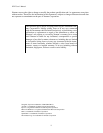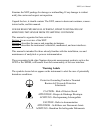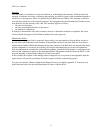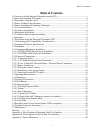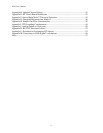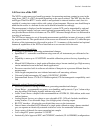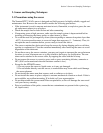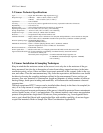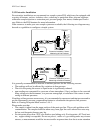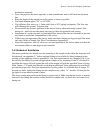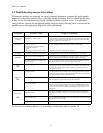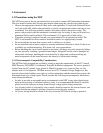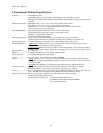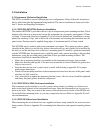XDT User’s Manual
4
2.2 Sensor Technical Specifications
Type: ..................................Hyper Thin Film HTF™ high capacitance Al
2
O
3
.
Dewpoint range:.................XTR-100: -148°F to +68°F (-100°C to +20°C)
XTR-65: -85°F to +68°F (-65°C to +20°C).
Capacitance:.......................15nF to 200nF.
Accuracy:...........................±5.5°F (±3°C) refer to appendix M for accuracy expressed in other units of measure.
Repeatability:.....................±0.9°F (±0.5°C).
Response time:...................refer to Dewpoint Response time analysis in Appendix G.
Operating Temperature: .....14°F to 158°F (-10°C to +70°C), non-condensing
Storage Temperature:.........-40°F to+176°F (-40°C to +80°C), non-condensing
Sample Flow range: ...........(linear velocity @ 1ATM): Static to 100m/s.
Enclosure: ..........................encapsulated in 100µ sintered stainless steel.
Calibration method: ...........Highly uniform sensors calibrated at low dewpoint and SpanCheck™, sensor saturates at dewpoint
above +68°F (+20°C). NIST/NPL traceable multi-point factory calibration available optionally.
Pressure operating range:...Standard:500 PSI (34 bar).
Optional:5,000 PSI (340 bar).
Mechanical connections:....14mm x 1.25mm sparkplug threads, and ¾”-16 threads, standard
Optional configurations: G1/2, 1/2”NPT, 5/8”-18 and others
Electrical connections:.......Female BNC connector.
Sensor signal cable: ...........RG58 coaxial cable, or for lengths greater than 100’ RG6 coaxial cable, max 3,000’.
Approvals/Classifications:.CE for electromagnetic compatibility, accredited laboratory tested and certified
UL and cUL for ordinary use
Intrinsically Safe configurations: for NEC standard IS Simple Apparatus: UL
for CENELEC standard IS Simple Apparatus: DEMKO,
refer to labeling
2.3 Sensor Installation & Sampling Techniques
Keep in mind that the moisture content at the sensor is not only due to the moisture of the gas
being measured, but also due to desorption of water from tubing, trapped moisture (at the inter-
connection points, valves, filters and other hygroscopic materials in the system), leaks in the sys-
tem, and others. Thus the measurement may vary from the expectation, and therefore care should
be taken in choosing the sampling technique utilized in the measurement. Factors such as gas
pressure, flow rate, materials of construction, length and diameter of tubing, number of intercon-
necting fittings, dead space in tubing and manifolds; will influence the measurement value and
response time.
The high capacitance HTF™ sensors can be installed either directly in the line to be sampled (in-
situ), or in a slip stream of a sample system (extractive).
To assure a long and accurate performance of the sensor, it should be protected from contaminants
such as liquids (water, oil etc.), and particulates. The sintered stainless steel sensor encapsulation
protects from particulates larger than 100 microns, finer particulates (e.g. from degraded desic-
cant or rust) should be filtered with a particulate filter with suitable capability, do not use hygro-
scopic filter materials. Refer to Sample Gas Filter Considerations Appendix H.



